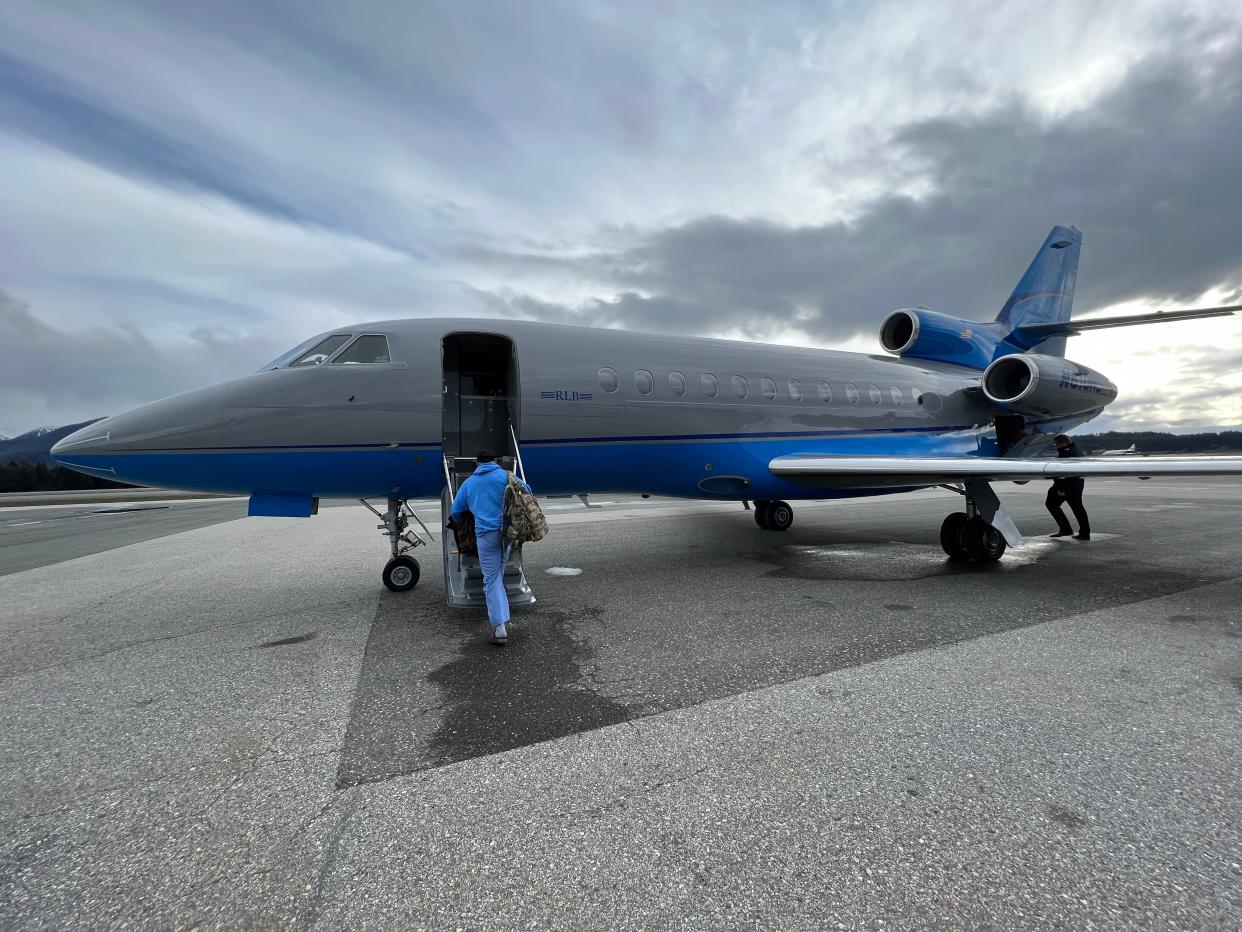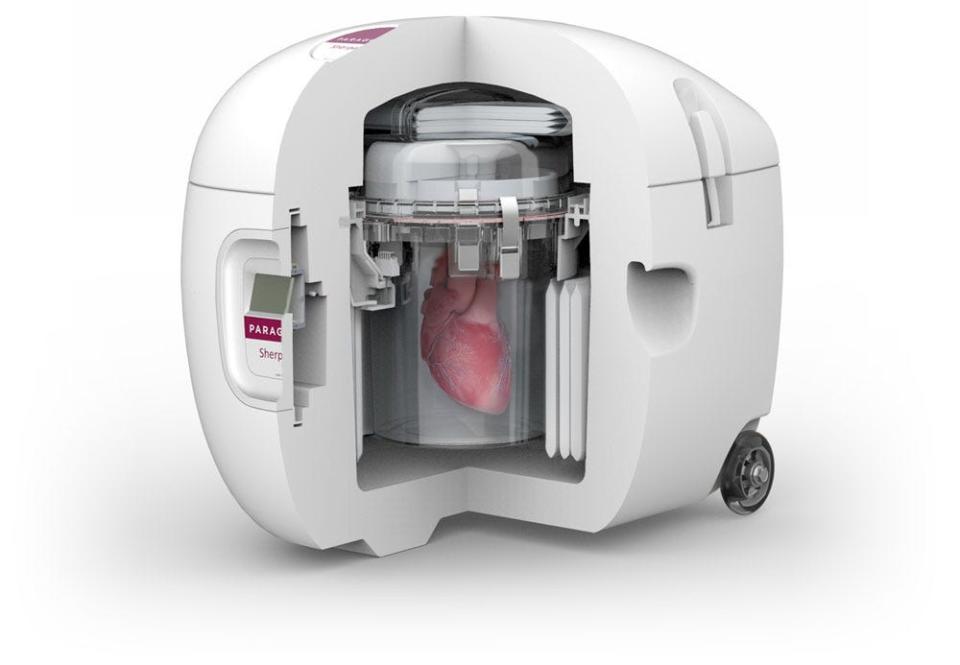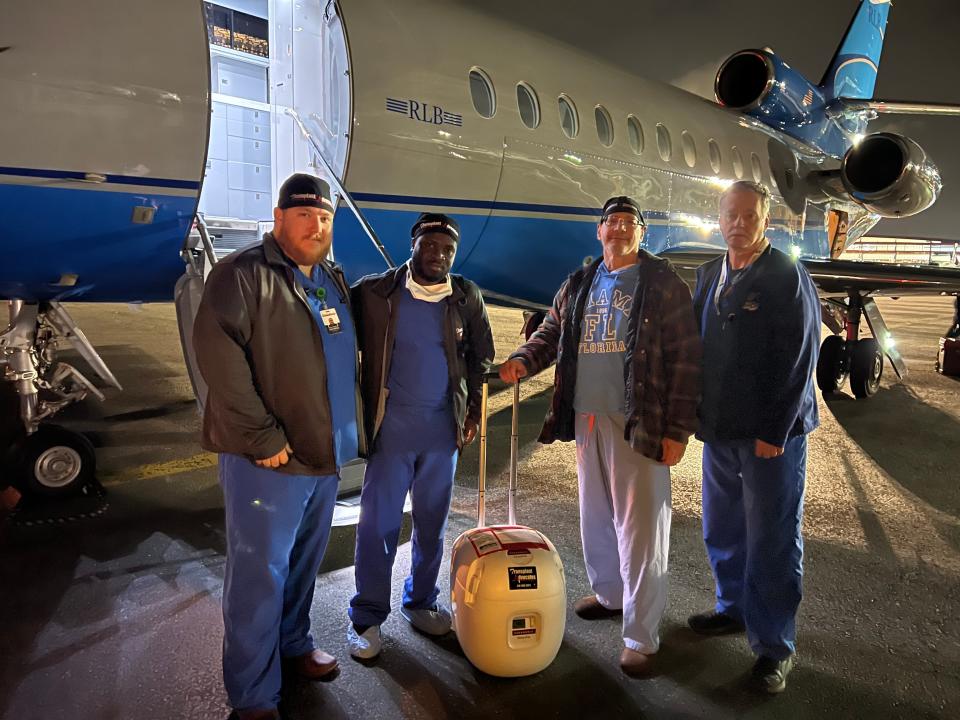A heart was flown from Alaska to Boston, breaking a transplant record. Here's how it was done.

Dr. Joseph Rubelowsky felt as if he had just robbed a bank.
Still in his scrubs, he boarded the Falcon 900 jet, sat down and glanced over at the white cooling contraption that held the day’s loot. Strapped to the aircraft floor, it looked like a normal carry-on suitcase.
But what the cooler carried was far from normal – and more precious than money or gold. It was a human heart.
Rubelowsky, a surgeon for Transplant Advocates, had just procured a healthy heart in Juneau, Alaska, and was on his way to Boston to hand-deliver the organ to surgeons at Massachusetts General Hospital, who hoped the heart would still be viable for their patient.
At a record-breaking 2,506 miles, the trip in late April is the farthest a human heart had ever traveled, according to Paragonix Technologies, an organ preservation provider that created the cooling system in which the heart was transported.
“This is probably twice as far as we’ve ever gone for a heart that we didn’t put on a perfusion system,” said Dr. David D’Alessandro, cardiac surgeon and surgical director of heart transplantation at Massachusetts General Hospital.
US organ transplant system is outdated: And it's costing lives. An overhaul is underway.
‘The dose is the poison’
A transplant team typically wants to keep the heart’s cold ischemic time – or the time an organ is out of the body before transplanted into a recipient – between four and six hours.
“Time is our enemy,” Rubelowsky said. “The faster we can get it from the donor to the recipient, the better that heart is going to work.”
But the trip from Juneau to Boston took about 7½ hours. The team got away with it in part because of a cooling system called SherpaPak by Paragonix Technologies. It was first cleared by the Food and Drug Administration in 2013, but experts say it's gaining popularity as more research shows it may extend total ischemic time.
Donated hearts typically travel in a cooler, like the ones people use at the pool or beach, and ice. Though that helps keep the organ cool, the uncontrolled temperatures inside can dip below freezing, which increases the risk for tissue damage.

The SherpaPak keeps the heart at a perfect temperature of 4 to 8 degrees Celsius, Rubelowsky said.
“Cold is good, (but) the dose is the poison,” he said. “You don’t want it too cold; you don’t want it too warm. You want it just right.”
During the flight, he was able to monitor the heart’s temperature with a mobile app. On the ground, health care providers used that same app as the heart made its way across the country.
“We can protect the heart for longer periods of time,” D’Alessandro said. “In years past, we wouldn’t have thought about using a heart from Alaska because it’s just too far. Now we think there’s a good chance these hearts are useable.”
‘Not putting organs to waste’
Experts say the SherpaPak technology can help reduce the number of viable organs that are discarded because of long distances and cold ischemic times.
This comes after the Biden administration announced plans in March to overhaul the network that runs the U.S. organ transplant system, which experts say fails patients of color most.
For nearly 40 years, the federal government has contracted the nonprofit United Network for Organ Sharing, UNOS, to run the national digital database that matches organs with patients.
A 2019 study estimated the country discards about 3,500 kidneys a year, which is about 18% of the kidneys it recovers. Research shows about 20 people die in the U.S. every day waiting for an organ transplant.
“What policymakers want to see is that we’re maximizing the use of organs, that we’re not putting organs to waste,” D’Alessandro said. The SherpaPak “is just an example of technology that we know can help us more maximally utilize available organs.”
Mission accomplished
It was well after midnight when Rubelowsky finally stepped off the jet. An ambulance was waiting for his transplant team at the airport.
He handed over the heart, still protected by the SherpaPak, and watched the flashing lights drive away toward Massachusetts General Hospital.
Rubelowsky realized he was still holding his breath when he landed back home in Cleveland. As he regained cell service, a text from the Boston surgeon flashed on his phone:
“The heart did very well.”
All the tension in his chest was released with one big sigh.
The patient, who declined to speak to the media, was discharged from the hospital a few weeks later. Rubelowsky imagined the light returning to their eyes, rosiness blushing their cheeks, and all their organs coming back to life thanks to the new, vigorous heart.
It's his favorite part of the job.
The heart “is not the most chemically complex organ, but it’s certainly the most passionate,” Rubelowsky said. “That’s why I love doing this. There’s no other organ like that.”

Contributing: Nada Hassanein. Follow Adrianna Rodriguez on Twitter: @AdriannaUSAT.
Health and patient safety coverage at USA TODAY is made possible in part by a grant from the Masimo Foundation for Ethics, Innovation and Competition in Healthcare. The Masimo Foundation does not provide editorial input.
This article originally appeared on USA TODAY: Heart transplant achieves record-breaking 2,506-mile trip

